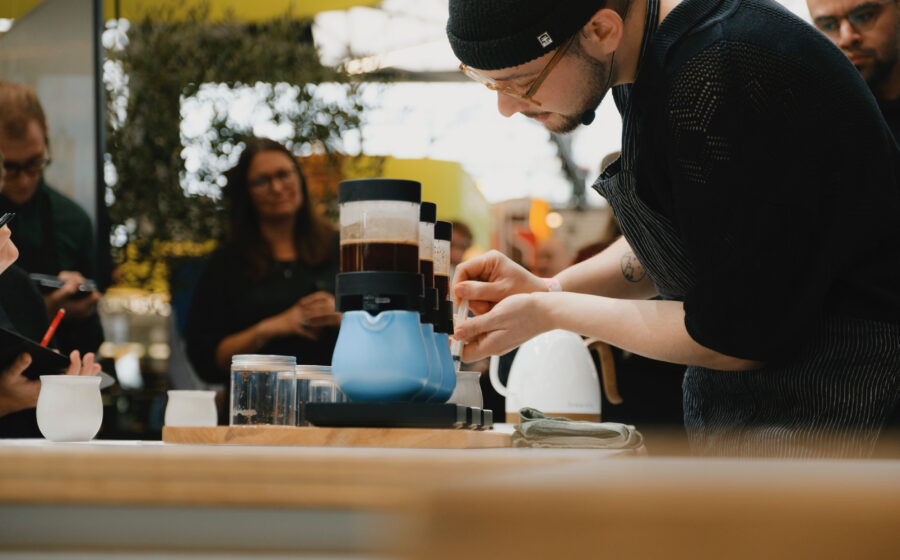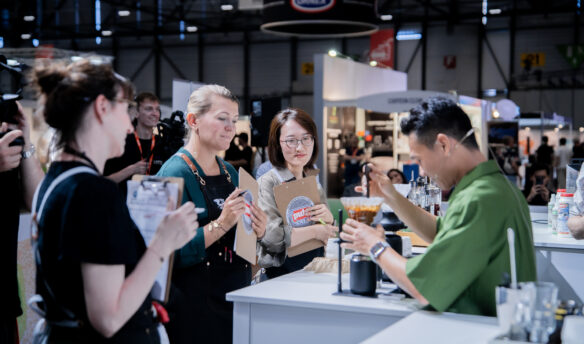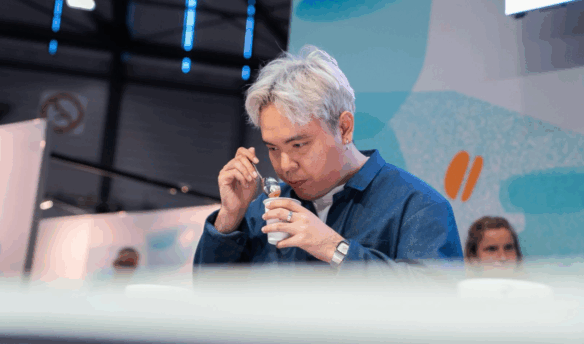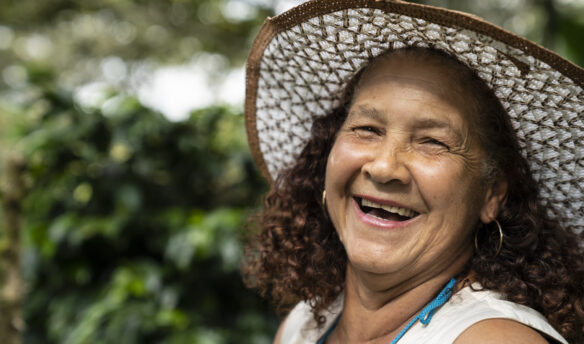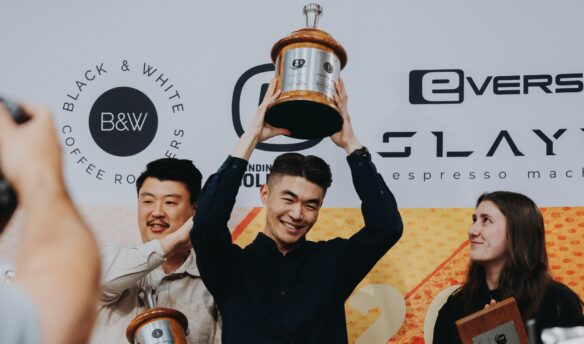The first time Mikołaj Pociecha cupped robusta, it tasted like every stereotype he’d heard: rubber, wood, asphalt. He laughed out loud. “It was bad,” he remembers. “Exactly what everyone warns you about.” But when that same coffee—this time roasted by his own hand—revealed notes of strawberries, grapes, and caramel, he laughed again, this time in disbelief.
That contrast—between expectation and reality—sits at the heart of Pociecha’s journey with robusta. Over the last five years, the Polish-born, Amsterdam-based roaster and co-founder of Chunky Cherry Coffee Roasters has become a vocal advocate for Coffea canephora, a species still largely misunderstood by the wider coffee industry.
“Was a bad roast all it took for me to write off an entire species?” he asks. “How many of us have actually tasted a high-quality, well-roasted, well-brewed robusta?”
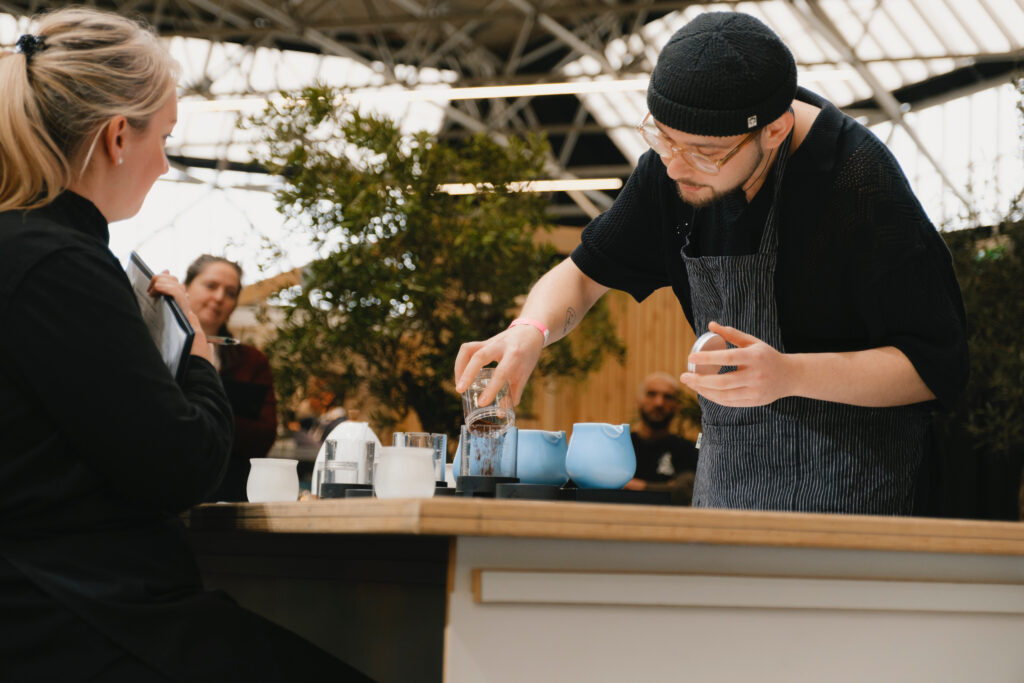
Canephora is often referred to by the coffee’s commercial name, robusta, but this term obscures the genetic diversity within the species. In reality, C. canephora includes two primary genetic-variety groups (Conilon, grown mainly in Brazil, and Robustas, cultivated across Africa and Southeast Asia) and numerous cultivars.
Pociecha’s new book, “Robusta/Canephora: A Brief Guide to Loving It,” seeks to correct the misconceptions. The volume is a multi-voice effort that compiles insights from researchers, roasters, producers, scientists, and writers. The goal is telling robusta’s story on its own terms—free from the comparisons that have long held it back.
What started as a personal detour became a calling: Over time, Pociecha carved out a space for canephora in the coffee industry that challenges norms, celebrates nuance, and refuses to settle for easy answers.
Fresh Cup sat down with Pociecha ahead of the book’s European launch tour, which began at the Valencia is Coffee Festival on June 1 We talked about decoding robusta, the emotional pull of underdog coffees, and shifting the industry toward greater inclusion of other coffee species.
How did you first discover Coffea canephora?
That’s actually a really funny story. A friend of mine, who is also an importer, came by the roastery one day and couldn’t hide his excitement. He told me about these high-quality, sweet, and fruity robustas from Vietnam. I was curious—mostly because, to my knowledge, I had never tried a robusta before, or even a coffee from Vietnam.
We set up a cupping. He brought roasted samples, and after the first sip, I laughed—it tasted just like people warned me it would: rubber, wood, asphalt. It left a terrible first impression.
Later, he came back with the same coffees, this time as green samples. He asked me to roast them. I had never roasted robusta before, but I agreed—mainly as a favor. I didn’t invest much time in it; I wasn’t expecting anything from it. But when I cupped them again, something wild happened.
I laughed again—but this time, because I tasted strawberries, grapes, and sweet caramel.
As a self-taught robusta roaster, where did you turn for knowledge in the early days?
There wasn’t much information available. And what did exist was mostly inaccessible unless you had a PhD in biochemistry. Even once I could make sense of the research papers, I quickly realized that theory and practical application were often worlds apart. Most experiments were so specific or so limited in scope that they didn’t help me as a roaster.
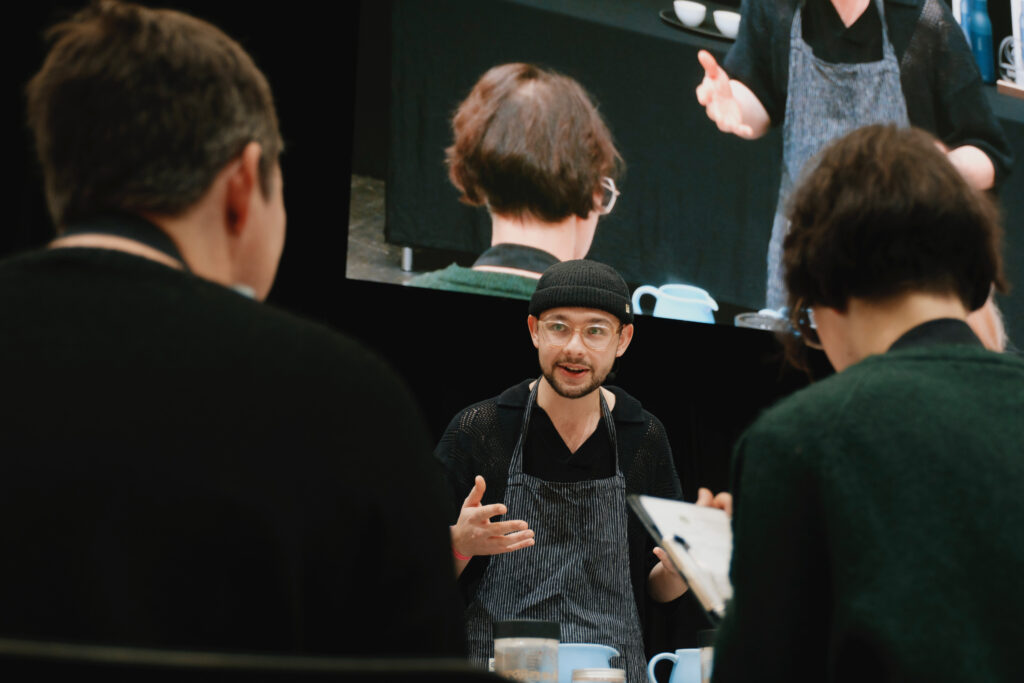
So I had to improvise. I adapted existing roasting techniques to account for the key differences in robusta—its more complex cell structure, lower density, and slower browning reactions. It was all trial and error. But if you’re willing to be radically honest with your sensory analysis, you start to learn which variables matter.
What were the main challenges you faced due to the lack of resources on robusta roasting?
The biggest one was sourcing—and evaluating—green coffee. If you don’t know what good robusta is supposed to taste like, how do you judge quality? You can reject perfectly good coffee just because the roast was wrong. That happens more often than people admit.
And when roasters fail to roast it well, customers reject the coffee, and producers get hurt by that perception. In some cases, I’ve even heard of producers receiving negative feedback because of bad sample roasts.
So yes, when we talk about canephora’s reputation, we have to talk about roasting. And when we talk about roasting, we have to talk about responsibility.
When did you decide that this knowledge gap needed to be addressed through a book?
I wasn’t certain how to address this or if I was the right person to do so. I mostly did it for myself, and anyone who chooses to engage in it does so of their own accord. My journey was driven by how quickly I learned about it. It pains me that five years have passed since I started my journey with robusta. I am a slow learner, and everything tends to take me a little longer. However, once I grasp it, it really sticks with me.
What was it like putting the book together—from roasting to writing and organizing the material?
I believe this can be divided into two sections: the development of my attitude and awareness, and my technical knowledge. It took me about a year to learn how to roast robusta coffee well. After that, it took another four years to understand why certain techniques work and how to apply them consistently to a variety of coffees.
I hold the unusual belief that my roasting skills are closely tied to my attitude. My goal was to become the best at roasting, but I realized that this wasn’t enough. Being the best felt irrelevant if I didn’t grasp the societal and historical context surrounding coffee. There is a purpose behind my pursuit of excellence with every robusta I roast.
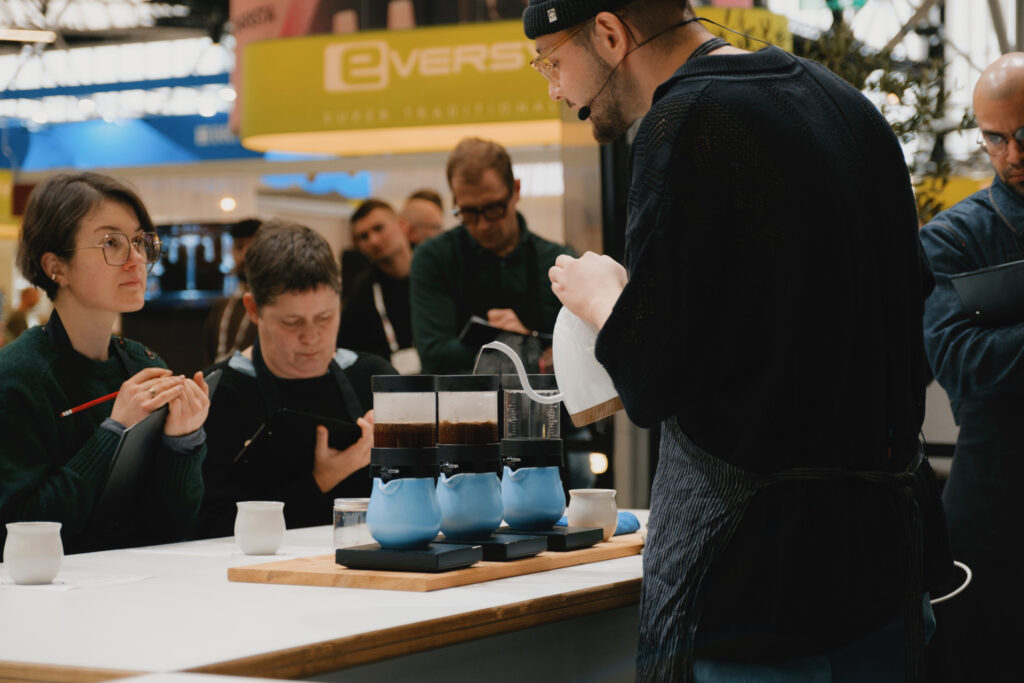
This understanding reflects how the book is organized. First, readers gain background knowledge and insights on topics they might have overlooked. Only then do they embark on the journey of exploring the technical knowledge necessary to work with Robusta in this purposeful way. If it doesn’t happen with intention, then it shouldn’t happen at all.
Why did you choose to bring in collaborators and experts to contribute to the book? What does that say about the role of community in this movement?
I consider myself incredibly fortunate to have connected with all of [the contributors]. I couldn’t have imagined this book coming to life without their invaluable perspectives. I don’t claim to be particularly smart, insightful, or an expert in every field. For readers to have a well-rounded and meaningful experience with this book, it’s essential for them to hear from others as well. In my eyes, they are the most inspiring group of people, and I wanted others to feel that inspiration too.
A new flavor wheel for canephora came out this year. Do you see the book and the flavor wheel as part of the same shift in how canephora is understood?
I believe so. We are all beginning to shift our perspectives. It feels like a tide. It is beautiful to see coffee professionals coming together in what almost feels like a quiet revolution.
Scientists, roasters, baristas, producers, processing experts, journalists, and historians are forming what appears to be the largest collective agreement in coffee that I can remember: “Okay, it’s time for robusta to take the spotlight; it’s time for it to be understood on its own terms.”
What kind of impact do you hope this book will have—especially on coffee professionals who still hesitate to engage with robusta?
I hope to annoy them! There is nothing hesitant coffee professionals hate to hear more than, “It’s your fault for this tasting bad.” I believe that from this annoyance, we will witness growth and increased curiosity.
The key takeaway is this: Robusta/canephora is a coffee species. The most diverse commercially grown coffee species in the world. There is so much beauty in it and in the people around it. What a shame it would be to miss out on all of that.
This interview has been edited for length and clarity. Photos by Connor Houtman.



